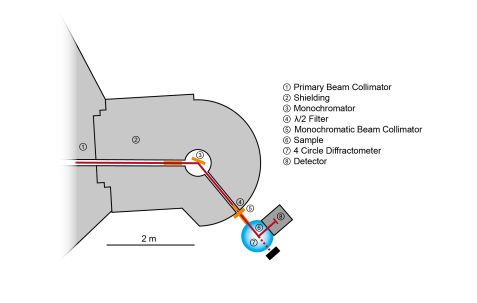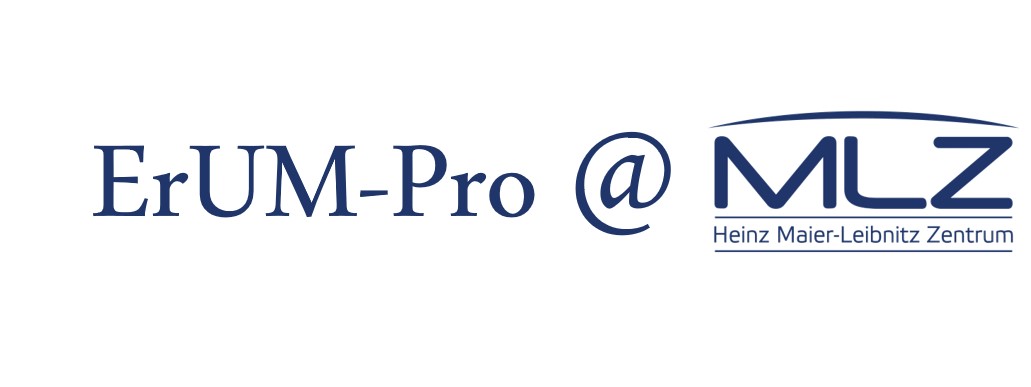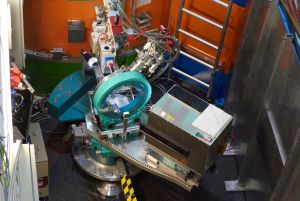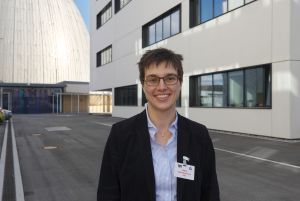MLZ is a cooperation between:
 > Technische Universität München
> Technische Universität München > Helmholtz-Zentrum Hereon
> Helmholtz-Zentrum Hereon
 > Forschungszentrum Jülich
> Forschungszentrum Jülich
MLZ is a member of:
 > LENS
> LENS > ERF-AISBL
> ERF-AISBL
MLZ on social media:

MLZ (eng)
Lichtenbergstr.1
85748 Garching
HEiDi
Single crystal diffractometer on hot source
The single crystal diffractometer HEiDi is designed for detailed studies on structural and magnetic properties of single crystals using hot unpolarised neutrons and Bragg’s Law:
2 dhkl sin (Θ) = λ
(typically 0.55 Å < l < 1.2 Å).
Because of its large variety of short wavelengths, flexible resolutions and high flux, HEiDi is suitable for studies on many different crystalline samples and related topics in solid matter physics, solid state chemistry, mineralogy, and material sciences. Many of these compounds are of potential interest for energy or data storage technologies. Examples are:
- High temperature superconductors (e.g. cuprates, pnictides)
- Multiferroics (e.g. manganates), magneto calorics, and other complex ferro- and antiferromagnetic compounds
- Ionic conductors (e.g. brownmillerites or nickelates)
- Ferrolelectrica (e.g. KDP family)
- Mixed crystals (e.g. AsSe compounds)
- Highly absorbing compounds (e.g. with Gd, Sm, Eu)
- Small molecules (e.g. Guanidine)
- Determination of chemical structures
- Determination of magnetic structures
- Atomic mean square displacements
- Spin densities
- Structural phase transitions
- Static and dynamic disorder
- Twinning, modulated, and incommensurate structures
- Studies on atomic positions and bond lengths in compounds with light and heavy elements
- Mixed site occupations with elements of similar electron shells
- Temperature and pressure dependent studies on atomic or magnetic phase transitions
- Studies on order-/disorder phenomena, e.g. H locations and bonds
- highly absorbing compounds, e.g. with RE elements using short wavelengths
- Magnetic ordering in all facettes
- Sample characterisation by profile analysis (mosaicity, twinning)
- Sample alignment, e.g. for studies on triple axes spectrometers
- Educational activities on crystallography and structure analysis
- Closed cycle cryostat: 2 K – RT
- Micro furnace: RT – 500 K
- Mirror furnace with adjustable gas atmosphere and pressure: RT – 1300 K
- High pressure
- Panoramic diamond anvil cell (DAC)
- Transmission DAC (80°, 120° Yao-DAC)
- Uniaxial pressure cell (special PUMA cryostat)
- SR9B (hot source)
- Flux at sample 1.4·107 n cm-2s-1
(λ ≈ 1.17 Å) - Gain by hot source × 10 (λ ≈ 0.6 Å)
- wavelengths λ [Å]:
| 2ΘM | Ge(311) | Cu(220) | Ge(422) | Cu(420) |
| 20° | 0.503 | 0.443 | 0.408 | 0.280 |
| 40° | 1.168 | 0.870 | 0.793 | 0.552 |
| 50° | 1.443 | 1.079 | 0.993 | 0.680 |
- reciprocal space Qmax =sin(Θmax) λ [Å-1]
| 2ΘM | Ge(311) | Cu(220) | Ge(422) | Cu(420) |
| 20° | 1.46 | 1.95 | 2.12 | 3.09 |
| 40° | 0.74 | 0.99 | 1.09 | 1.57 |
| 50° | 0.60 | 0.80 | 0.87 | 1.27 |
- neutron filters to suppress λ/2- or λ/3-contamination
- horizontal collimators: 60’, 30’, 15’ before and 30’, 20’, 15’ after monochromator
- optional: vertically focusing neutron guides for hot neutrons
- automatised rectangular BC4-slits before and after sample
- acentric Eulerian cradle
- single detector optimised for small wavelengths (sensitivity > 90% at 0.3 Å) (PSD under development)
- optional: PG(002) analyzer for purely elastic scattering and background suppression
- collect Bragg reflections (automatic parameter adjustment to maximise their no. and significance)
- map reciprocal space Q in up to 3 dimensions
- avoid shielding effects from sample environment (e.g. pressure cells)
Instrument Scientists
Dr. Martin Meven
Phone: +49 (0)89 158860-727
E-Mail: martin.meven@frm2.tum.de
HEIDI
Phone: +49 (0)89 158860-504
Operated by

Funding
News
Publications
Find the latest publications regarding HEiDi in our publication database iMPULSE:
Citation of the instrument
Heinz Maier-Leibnitz Zentrum. (2015). HEiDi: Single crystal diffractometer at hot source. Journal of large-scale research facilities, 1, A7. http://dx.doi.org/10.17815/jlsrf-1-20
For citation please always include the DOI.
Gallery


MLZ is a cooperation between:
 > Technische Universität München
> Technische Universität München > Helmholtz-Zentrum Hereon
> Helmholtz-Zentrum Hereon
 > Forschungszentrum Jülich
> Forschungszentrum Jülich
MLZ is a member of:
 > LENS
> LENS > ERF-AISBL
> ERF-AISBL
MLZ on social media:







